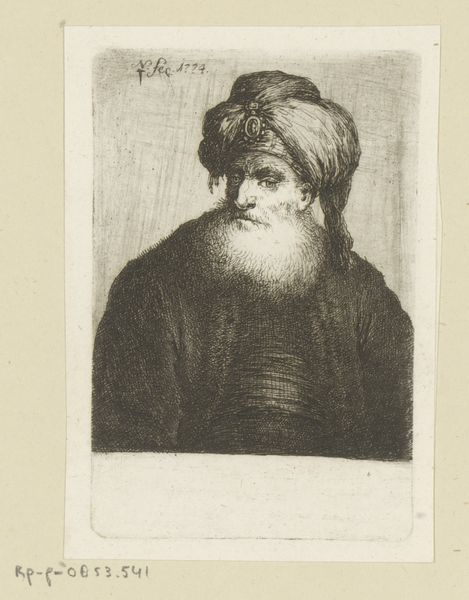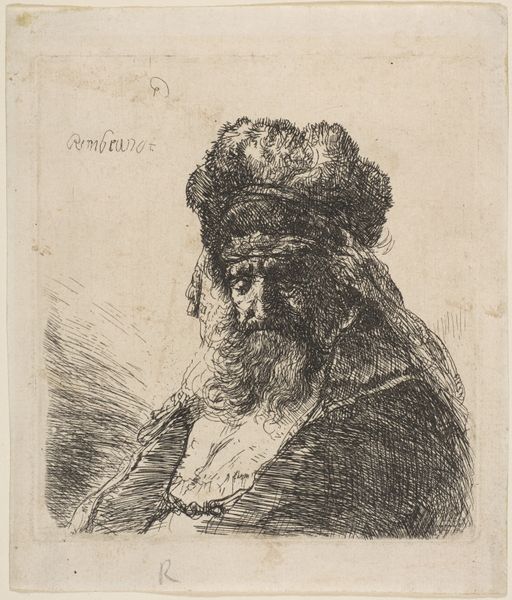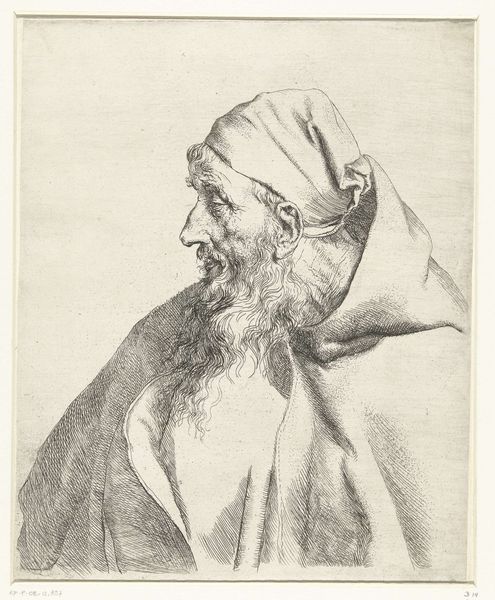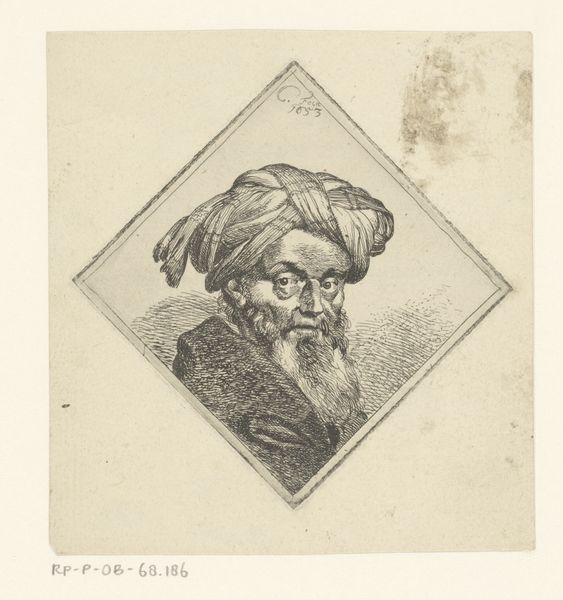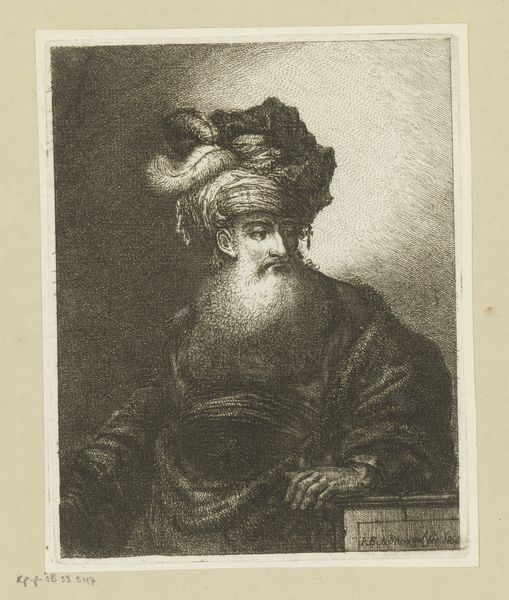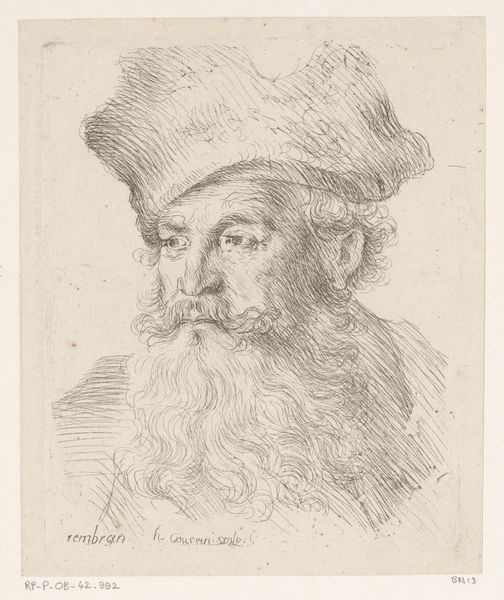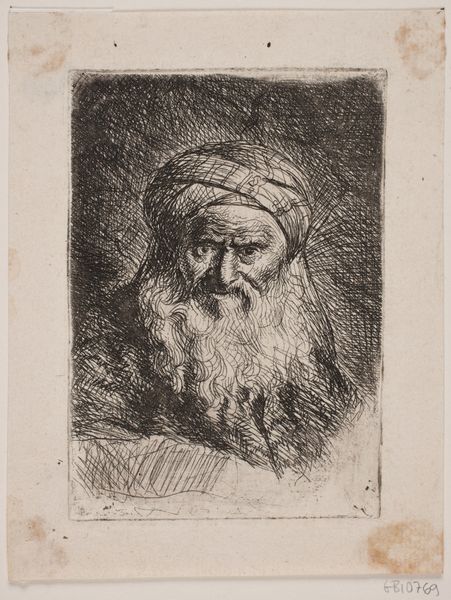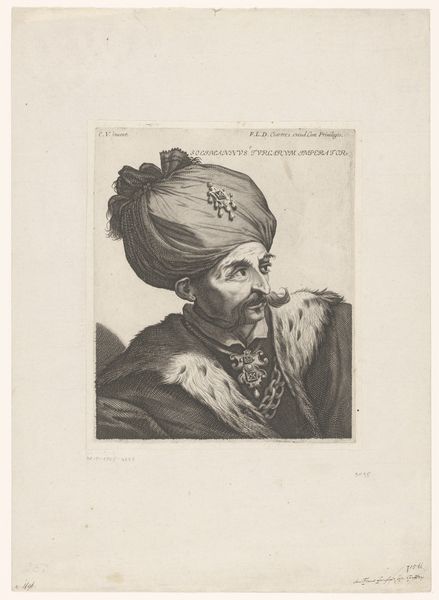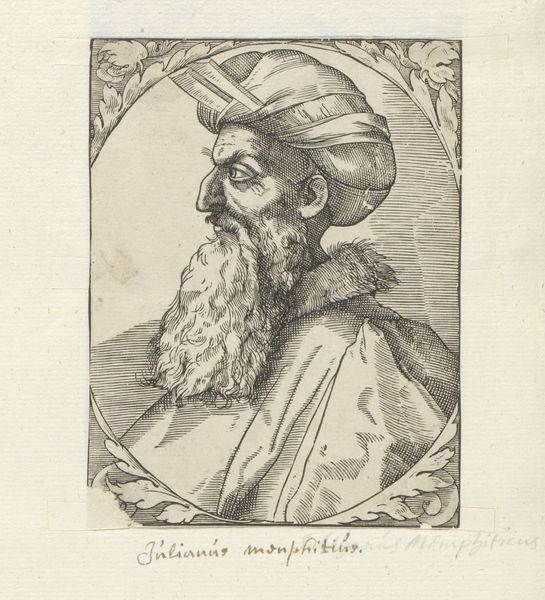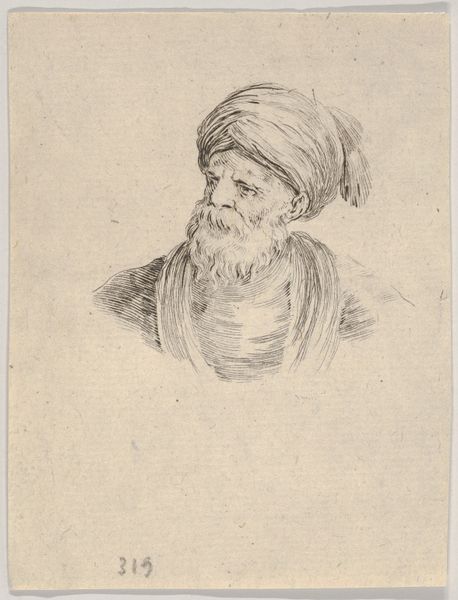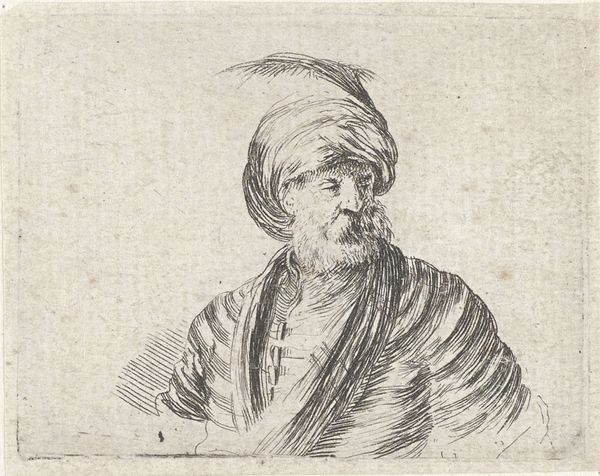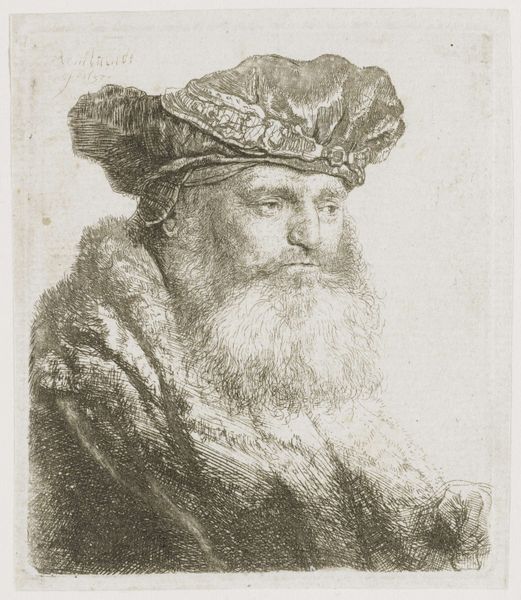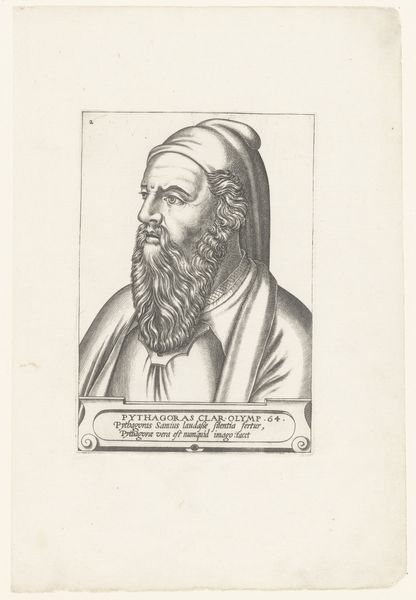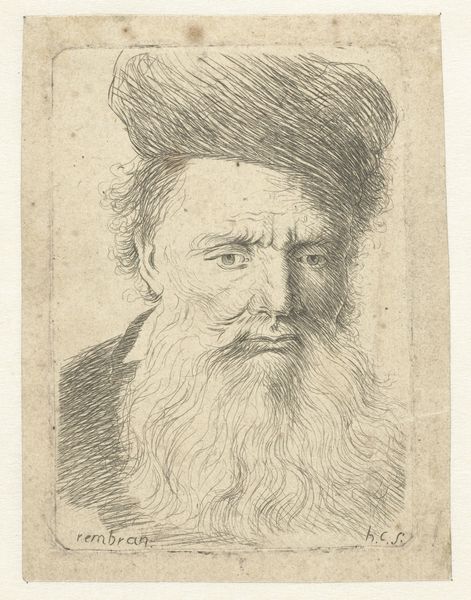
metal, engraving
#
portrait
#
baroque
#
metal
#
old engraving style
#
history-painting
#
engraving
Dimensions: height 222 mm, width 183 mm
Copyright: Rijks Museum: Open Domain
Curator: Looking at this artwork, I immediately sense a feeling of wistful melancholy, an inner reflection that somehow contrasts with the subject’s stern gaze. It's got a very human quality despite depicting a historical figure. Editor: Indeed! We are looking at a portrait that the Rijksmuseum holds in its collection. It’s an engraving from the period 1615-1647, created by Jerôme David, portraying none other than Emperor Frederick I, nicknamed Barbarossa. Curator: Barbarossa...Redbeard. I suppose the artist, or perhaps the engraver following an earlier design, must have found a different iconographic hook to hang the portrait on, rather than depicting a flaming beard. I’m wondering about the turban, actually. Why the turban, when he was a Holy Roman Emperor? Editor: The turban and the legend written just above Barbarossa’s head “Barbarossa Rex Algerii Insignis Pyraeta” suggest something unexpected. The work highlights a period where Barbarossa served as the Sultan’s admiral of Algiers, in the Maghreb, during which he commanded many naval operations throughout the Mediterranean, and became an infamous pirate himself. So the engraver cleverly uses familiar signifiers of North Africa to illustrate this chapter. The jewel in the turban even gives a sparkle to his somewhat world-weary expression. Curator: That explains his slightly sideways glance, doesn't it? As if he's not quite meeting our eye, maybe regretting a few decisions made in his naval career. Perhaps it's not melancholy, but just plain old remorse? All those lives, all that plunder. It is compelling how just a few carefully placed lines etched in metal can convey so much inner turmoil, or at least hint at it. The engraver truly was skilled to render that psychological depth using such precise hatching techniques! I love how these baroque era prints often feel intensely psychological. Editor: Absolutely, and isn't that the power of symbols? To transport us, make us question, make us reconsider what we think we already know. And this portrait definitely turns history on its head, or rather, places a turban where we might expect a crown. It reminds us how fluid identity and reputation were, and continue to be, especially for figures in the arena of politics and war. Curator: Right. I now understand that the jewel might well be his tear.
Comments
No comments
Be the first to comment and join the conversation on the ultimate creative platform.
